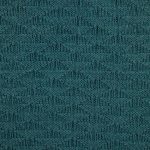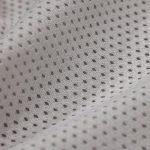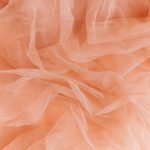You might think all fabrics handle sweat the same way, but that’s not true. How well a fabric wicks moisture depends on factors you might not expect, like the fibers it’s made from and how they’re woven. Understanding these details can change the way you choose clothes for workouts or everyday wear. But what exactly makes some fabrics pull moisture away while others just soak it in?
Table of Contents
Key Takeaways
- Moisture wicking depends on fiber type; synthetic fibers repel water but move sweat away quickly, while natural fibers absorb and retain moisture.
- Fabric construction affects wicking; knit fabrics with loops promote airflow and moisture movement, unlike tight woven fabrics that slow drying.
- Capillary action drives wicking by pulling sweat along fiber surfaces, spreading moisture for faster evaporation.
- Fiber arrangement and surface texture influence moisture flow; loosely arranged fibers and smooth surfaces enhance wicking efficiency.
- Technical fabrics use engineered fibers and weaves to optimize moisture transport, unlike traditional fabrics that hold moisture and feel damp.
How Fiber Composition Influences Moisture Management
Although many factors affect moisture management in fabrics, fiber composition plays a crucial role. When you choose fabrics, understanding different fiber types helps you predict how they handle moisture absorption.
Natural fibers like cotton absorb moisture well, making them feel damp longer but comfortable initially. On the other hand, synthetic fibers such as polyester have low moisture absorption, so they dry faster and keep you feeling dry.
Blends combine properties, balancing moisture absorption and quick drying. By knowing the fiber types in your fabric, you can select materials tailored to your activity or climate, ensuring better comfort and performance.
The Role of Capillary Action in Fabric Wicking
You’ll notice that moisture moves through fabric thanks to capillary action, which pulls water along tiny spaces between fibers.
The structure of these fibers directly affects how well this wicking process works.
Understanding this mechanism helps you choose fabrics that keep you dry and comfortable.
Mechanism of Moisture Movement
When moisture touches fabric, capillary action pulls it along tiny spaces between fibers, helping the fabric wick sweat away from your skin.
This movement moves moisture from wetter areas to drier ones, enhancing the evaporation process. As the moisture spreads across the fabric surface, it evaporates more quickly, keeping you dry and comfortable.
If the fabric holds onto moisture too tightly, it increases moisture retention, making you feel damp and clammy. Fabrics that wick well strike a balance—they transport sweat away efficiently without holding onto it.
This mechanism relies heavily on the fabric’s ability to channel liquid through narrow spaces, enabling continuous moisture movement. Understanding this process helps you appreciate why some fabrics outperform others in managing sweat during activities.
Fiber Structure Influence
Moisture movement through fabric depends largely on how fibers are arranged and structured. Different fiber types influence wicking because their shape and surface texture create tiny channels that guide moisture via capillary action.
For example, synthetic fibers like polyester often have smooth surfaces and smaller capillaries, promoting faster moisture transport and less moisture retention. Natural fibers such as cotton have irregular shapes and larger pores, which can trap moisture and slow down wicking.
When you choose fabrics, understanding this helps you pick materials that manage sweat effectively. Fabrics with tightly packed, fine fibers create better capillary pathways, pulling moisture away from your skin quickly.
Impact of Fabric Construction on Moisture Movement
You’ll notice moisture moves differently through knit fabrics compared to woven ones because of their unique structures.
The way fibers are arranged and the surface texture also play key roles in guiding that movement.
Let’s explore how these construction details affect moisture handling in fabrics.
Knit vs. Woven
Although both knit and woven fabrics serve many purposes, they handle moisture quite differently due to their distinct constructions.
Knit characteristics, such as loops and stretch, create more space between yarns, allowing moisture to move quickly and air to circulate. This makes knit fabrics excellent for moisture-wicking and breathability, perfect for activewear.
On the other hand, woven advantages lie in their tight, interlaced yarns, which provide durability and structure. Woven fabrics tend to absorb moisture more slowly and distribute it across the surface, which can limit quick drying but offers better resistance to water penetration.
When choosing between knit and woven, consider how you want moisture to move—whether you need quick wicking and flexibility or strength and moderate moisture management.
Fiber Arrangement Effects
When fabric fibers are arranged tightly or loosely, they directly influence how water and sweat travel through the material.
You’ll notice that higher fiber density means less space between fibers, which can slow moisture movement but also improve moisture retention. In contrast, fabrics with lower fiber density allow moisture to pass through more quickly, helping you stay dry.
Fabric layering also plays a significant role; multiple layers can trap moisture between them or help wick it away, depending on how each layer is constructed.
By understanding fiber density and fabric layering, you can choose materials that manage moisture effectively for your needs, whether for athletic wear or everyday clothing.
This insight helps you pick fabrics that keep you comfortable by controlling moisture flow.
Surface Texture Influence
Surface texture plays an essential role in how fabric manages moisture movement. When you look closely, fabrics with different surface characteristics handle moisture differently.
Smooth surfaces tend to allow moisture to spread quickly because their texture variations are minimal, promoting efficient wicking. On the other hand, rough or uneven textures can trap moisture in tiny pockets, slowing down evaporation and wicking.
You’ll notice that fabrics with raised fibers or intricate weaves create more surface tension, drawing moisture along the fabric’s surface. Understanding these texture variations helps you choose the right fabric for your needs—whether you want something that dries fast during workouts or a softer material for everyday wear.
Moisture Evaporation and Its Effect on Dryness
Since moisture plays an essential role in how fabric feels and behaves, understanding how it evaporates can help you manage dryness better.
Fabrics with low moisture retention allow water to evaporate quickly, increasing evaporation rates and keeping you dry. Conversely, materials that hold onto moisture slow down evaporation, making the fabric feel damp longer.
When moisture evaporates efficiently, it pulls heat away from your skin, enhancing comfort. You’ll notice that fabrics designed to wick moisture often focus on balancing moisture retention and evaporation rates, ensuring sweat moves away from your body and dries fast.
Comparing Traditional and Technical Fabrics for Wicking
Moisture evaporation plays a big role in how fabrics manage wetness, but not all materials handle wicking the same way.
Traditional fabrics like cotton absorb moisture but tend to hold it, leaving you feeling damp longer. In contrast, technical fabrics are engineered to pull moisture away from your skin and spread it over a larger surface area for quicker evaporation.
When you choose between traditional fabrics and technical fabrics, consider your activity and comfort needs. Technical fabrics often use synthetic fibers with specialized weaves or coatings that enhance wicking, keeping you drier during intense workouts or outdoor activities.
Meanwhile, traditional fabrics might feel softer but don’t dry as fast. Understanding these differences helps you pick the right fabric for moisture management.
Practical Benefits of Moisture-Wicking Fabrics in Daily Use
When you wear moisture-wicking fabrics, you’ll notice they keep you comfortable throughout the day by efficiently managing sweat and dampness. Their practical applications extend beyond sportswear to everyday clothing, enhancing daily comfort whether you’re at work, running errands, or relaxing.
| Activity | Benefit | Fabric Feature |
|---|---|---|
| Office Work | Stays dry, reduces odor | Breathable fibers |
| Outdoor Walks | Quick-drying, light | Fast moisture transfer |
| Gym Sessions | Keeps skin cool | High wicking capacity |
Frequently Asked Questions
How Do Laundering Detergents Affect Moisture-Wicking Performance?
You choose detergent composition, you follow fabric care, and you protect moisture-wicking performance. Harsh detergents can clog fibers, reducing breathability, while gentle formulas preserve the fabric’s ability to wick sweat and keep you dry and comfortable.
Can Fabric Color Influence Moisture Absorption or Drying Speed?
Yes, fabric color can influence moisture absorption and drying speed. You’ll find that fabric dyeing techniques and colorfastness effects impact how the fabric interacts with moisture, sometimes altering its wicking and drying performance noticeably.
Are Moisture-Wicking Fabrics Safe for Sensitive Skin?
You want comfort and care, you want safety and softness. When you choose moisture-wicking fabric types designed for sensitive skin, you’re protecting your skin, avoiding irritation, and enjoying dryness without discomfort or harm.
How Does Fabric Weight Impact Moisture Management?
You’ll notice fabric density effects moisture retention considerably; heavier fabrics hold more moisture and dry slower, while lighter fabrics wick moisture away faster, keeping you drier and more comfortable during activities or in humid conditions.
Do Moisture-Wicking Properties Degrade Over Time or Use?
You’ll notice moisture retention increases, drying slows, and comfort fades as moisture-wicking properties degrade over time. To maintain fabric longevity, you’ll need proper care, gentle washing, and avoiding harsh chemicals or high heat during drying.
- Evaluating Fabric GSM Cutter Machine Prices in Bangladesh - June 21, 2025
- An Overview of Narrow Fabric Manufacturers in Bangladesh - June 21, 2025
- Career Guide: Top Companies Hiring for Fabric Marketing Jobs in Bangladesh - June 21, 2025







